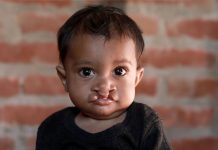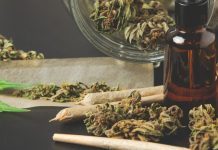Being a new mom can be incredibly challenging, leaving you feeling tired and depleted. If you find yourself feeling unwell, it might not just be the result of sleepless nights. Mastitis, an inflammation of breast tissue, is a common issue for breastfeeding moms, with 1 in 10 facing it. Symptoms include breast pain, warmth, and flu-like feelings. Prompt treatment is crucial to prevent infection. The good news is that you don’t have to stop breastfeeding. Frequent feeding may help resolve mastitis more quickly, allowing you to feel better and continue providing for your baby.
What is Mastitis
Mastitis, a painful breast infection commonly experienced by breastfeeding mothers, can be challenging to deal with. While medical treatment is often necessary, many women seek natural remedies for mastitis to complement their recovery process. We’ll delve into dietary and nutritional tips for prevention and discuss when medical treatment is essential. Discover safe and effective ways to alleviate mastitis symptoms and promote the natural healing process.
Natural Remedies for Mastitis
Mastitis is a painful condition that can affect breastfeeding mothers. It occurs when the breast tissue becomes inflamed, often due to a blocked milk duct or bacterial infection. While it’s essential to consult a healthcare professional for severe cases, there are some natural remedies and self-care techniques that may help alleviate mild mastitis symptoms:
Breastfeeding Frequently:
One of the best natural remedies for mastitis is frequent breastfeeding. When you are in bed, show affection to your baby and breastfeed at least every two hours a day. You can start with the uncomfortable side but offer both sides so the other does not get engorged. At the beginning of the feed, your baby tends to suck harder and it helps clear mastitis. Also, you can experiment with various positions till you feel comfortable. You can hold your baby in the arm opposite to your breast and support from the back with your open hand. Don’t lean or bend forward at the time of breastfeeding.
Proper Latch:
A latch is a way your baby nurses from the breast. A good latch may help with mastitis because your body can adjust the milk production naturally. You must ensure your baby has a good latch at the time of breastfeeding. Additionally, you can try different breastfeeding methods that help your baby to get a good latch. Creating a calm environment, allowing your breasts to hang naturally, and holding your baby skin to skin are the best ways to properly latch.
Heat Therapy:
A warm compress is beneficial in the treatment of mastitis. You can prepare a hot compress at home using a hot water bottle covered in a towel. Later, place the hot compress on the infected breast for about 15 minutes. You can repeat the cycle two or three times in a day. Another method is to take a warm shower before nursing. Placing heat on the engorged breast helps in relieving pain and improving the milk flow. It allows you to soothe your breasts after
Rest:
Getting plenty of rest is necessary when you have mastitis. It ensures your body functions properly and avoids unnecessary strain. It may be difficult to get rest when you are caring for an infant. Try to get into bed and slow down other daily tasks for a better cure. Taking rest can remove blocked milk ducts, regenerate milk production, and provide a better breastfeeding experience. On the other hand, you can ask for help from your partner, friends, or other relatives for a few days until you recover completely.
Stay Hydrated:
Hydration is essential when you are breastfeeding, if you are not hydrated, you may fall sick quickly. Drinking plenty of water will increase your milk supply. More milk supply can help clear clogs and other discomfort. You can aim to drink three liters of filtered water every day when you are nursing. It is better to include herbal tea, juice, and mil
Nutrition:
Maintaining a healthy diet rich in minerals and vitamins can support your immune system. The vitamins assist in healing and renewing the antioxidants in the body. Vitamin C is the primary nutrient that helps in tissue repair and immune function. You can include plenty of vitamin-rich nutrients in your diet such as broccoli, oranges, bell peppers, strawberries, and more.
A few vitamin-C-rich foods included in your diet are listed below:
- Kiwi
- Potatoes
- Cauliflower
- Tomatoes
- Brussels sprouts
- Lemon
- Cabbage
A healthy diet allows a new mom to recover from childbirth faster. Follow these diet tips that will help new moms in overall well-being.
Herbal Remedies:
Other natural remedies for mastitis are the usage of herbs that work well in reducing swelling, drawing out infection, and increasing lymph circulation. What are the best herbs that can be used during nursing? Ginseng, ashwagandha, lavender, milky oats, motherwort, chamomile, passion flower, skullcap, stinging nettle, and lemon balm are the best safe herbs to use while breastfeeding. All these herbs boost your immunity and reduce stress. You can apply any of these herbs up to 3 to 5 times per day for better relief and comfort.
Empty the Breast:
It is necessary to ensure your breast is fully drained during the pumping session or feeding. If you face trouble emptying a portion of your breast, you can apply moist heat to the breast before pumping milk or breastfeeding. If your baby is unable to feed on the affected side, you can pump gently and express the excess milk with your hands. Additionally, you can use ice to lessen inflammation till you can pump or breastfeed. Fully emptying the breast during each feeding through hand expression, pumping, and frequent feeding is the best way to treat mastitis.
Comfortable Bras:
Wearing a well-fitted and comfortable bra does not put much pressure on the affected breast. Using the right bra during breastfeeding is necessary for new moms. A bra that is too tight or restrictive can cause blocked ducts and lead to mastitis. So, you must avoid tight bras and go for soft and comfortable ones. You can choose nursing bras that make you feel more comfortable compared to other types. That way, you will get better relief from the mastitis.
Pain Relief:
Using pain relievers like naproxen and ibuprofen can reduce pain and swelling. You don’t need to live with pain and inflammation when you are facing mastitis. Some OTC(over-the-counter) pain medications such as Advil and Tylenol are safe for new moms and get the relief they want. If you are doubtful about taking the medication, you can consult a health professional or pharmacist. Choose any one of the medications at a time and take the suggested dosage. Consult your doctor before taking any medication during breastfeeding.
Cabbage leaves for Mastitis:
Cabbage leaves for Mastitis can easily deal with breastfeeding discomforts. A few women may find relief by placing chilled cabbage leaves on the affected breast. Firstly, you can place the clean and dry cabbage leaves in your refrigerator, helpful for easy cutting. Later, cover your breast area with the cabbage leaves except the nipples. After twenty minutes, you can remove the cabbage leaves and repeat the process twice or thrice a day.
Mastitis Antibiotics:
If your mastitis is caused by any bacterial infection, your doctor may prescribe antibiotics. A ten-day course of antibiotics is necessary when you have an infection. It is usually safe for your baby’s health. If the infection gets worse, you can go for IV antibiotics in a hospital.
For simple antibiotics, your doctor will prescribe oral antibiotics such as Dycill, Keflex, and others. Your doctor prescribes antibiotics depending on your situation and other health issues. Despite the rise of modern medicine, the power of natural remedies is overlooked. Check these natural antibiotics that kill bacteria in your body.In addition to these natural remedies for mastitis, if your symptoms worsen, consult a healthcare professional as soon as possible. Breastfeeding mothers can avoid discomfort and promote healing by understanding the causes, recognizing symptoms, and implementing home treatments. Focusing on nutrition, and stress management can prevent mastitis from the first place itself.
Medical Treatment for Mastitis
While natural and herbal remedies are valuable, there are instances where medical treatment is necessary. We’ll touch on the importance of consulting a healthcare professional when symptoms are severe or do not improve with home care. Antibiotics and other medical interventions may be prescribed to resolve the infection quickly.
- Antibiotics: If your mastitis is caused by a bacterial infection, your healthcare provider may prescribe antibiotics. These medications can effectively treat the infection and alleviate symptoms. It’s crucial to take the full course of antibiotics as prescribed, even if you start feeling better before completing them.
- Pain Relief Medications: Over-the-counter pain relievers like ibuprofen or acetaminophen can help reduce pain, fever, and inflammation associated with mastitis. Be sure to consult with your healthcare provider or pharmacist before taking any medication while breastfeeding.
- Abscess Drainage: In severe cases of mastitis, an abscess (a pocket of pus) may develop. Your healthcare provider may need to drain the abscess through a minor surgical procedure. This can provide significant relief and promote faster healing.
- Ultrasound Therapy: Some healthcare providers may recommend therapeutic ultrasound as an adjunct treatment for mastitis. This non-invasive technique uses sound waves to improve blood circulation and reduce inflammation in the affected breast.
- Breast Pumping: In some instances, using a breast pump may help alleviate mastitis symptoms by ensuring that milk is adequately emptied from the breast. This can help prevent further blockages and reduce inflammation.
- Consultation with a Lactation Specialist: If mastitis is recurrent or linked to breastfeeding difficulties, consulting with a lactation specialist can be highly beneficial. They can guide proper latching, positioning, and breastfeeding techniques to prevent future occurrences.
- Self-Care and Home Remedies: Alongside medical treatment, self-care measures and home remedies remain essential. Ensure you get plenty of rest, stay hydrated, and continue applying warm compresses to the affected breast. Gentle massage towards the nipple may help clear blocked ducts.
Symptoms of Mastitis
Early detection of mastitis is key to preventing the condition from worsening. The initial symptoms may include a localized lump or area of hardness in the breast, often accompanied by tenderness or pain. Some women describe this sensation as a “hot spot” or “knot” in the breast. As mastitis progresses, you may experience more severe symptoms, such as redness and warmth over the affected area, swelling, and flu-like symptoms like fever and chills. If you notice any of these signs, it’s important to take action promptly. Ignoring early signs can lead to the development of an abscess, a painful collection of pus that may require drainage.
Home Remedies for Mastitis
Mastitis, a painful inflammation of the breast tissue, can be reduced with simple home remedies. Applying a warm compress to the affected area, practicing gentle massage, and ensuring thorough breast drainage during breastfeeding can provide relief. Additionally, maintaining proper hygiene, getting adequate rest, and staying hydrated contribute to a faster recovery. If symptoms persist, it’s crucial to consult a healthcare professional for guidance. These accessible home remedies aim to promote comfort and aid in the natural healing process for individuals experiencing mastitis.
What Causes Mastitis?
It is a breast infection that can occur in breastfeeding women. It is caused by bacteria entering the breast through a crack in the nipple or through the milk ducts. The most common bacteria that cause breast pain and swelling are Staphylococcus aureus and Streptococcus agalactiae.
The symptoms of mastitis usually develop suddenly and can include:
- Pain in one breast, especially when breastfeeding or pumping
- Redness and swelling of the breast
- Warmth in the breast
- Fever
- Chills
- Headache
- Fatigue
- A lump in the breast
If you think you have inflammation, it is important to see a doctor right away. Early treatment is important to prevent the infection from spreading and causing serious complications. You may either opt for home remedies for mastitis when breastfeeding or follow the recommended diet and nutrition to manage the symptoms.
Diet and Nutrition for Mastitis Prevention
Preventing this condition is as crucial as treating it. We’ll discuss dietary and nutritional strategies to help reduce the risk of mastitis. This section will cover foods and supplements that can boost your immune system and promote breast health.
Tips for following a healthy diet and nutrition for mastitis
- Eat small, frequent meals throughout the day. This will help keep your blood sugar levels stable and prevent hunger pangs.
- Avoid skipping meals. Skipping meals can weaken your immune system and make it more difficult to fight off infection.
- Drink plenty of fluids. Staying hydrated is important for flushing out toxins and bacteria from your body which is one of the best natural ways to get rid of mastitis.
- Get enough rest. Resting helps your body to heal and fight off infection.
- Manage stress. Stress can weaken the immune system and make it more difficult to fight off infection. Find healthy ways to manage stress, such as yoga, meditation, or spending time in nature.
Bottom Line
Mastitis is a challenging condition, but natural remedies and holistic approaches can provide valuable support in combination with medical treatment. By understanding the causes, recognizing symptoms, and implementing home treatments, breastfeeding mothers can alleviate discomfort and promote healing. Additionally, focusing on diet, nutrition, and stress management can help prevent mastitis from occurring in the first place












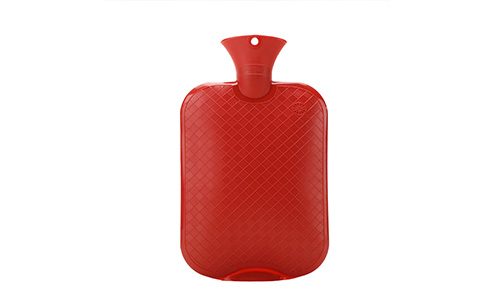

 Hydration is essential when you are breastfeeding, if you are not hydrated, you may fall sick quickly.
Hydration is essential when you are breastfeeding, if you are not hydrated, you may fall sick quickly. 

 It is necessary to ensure your breast is fully drained during the pumping session or feeding. If you face trouble emptying a portion of your breast, you can apply moist heat to the breast before pumping milk or breastfeeding. If your baby is unable to feed on the affected side, you can pump gently and express the excess milk with your hands. Additionally, you can use ice to lessen inflammation till you can pump or breastfeed. Fully emptying the breast during each feeding through hand expression, pumping, and frequent feeding is the best way to treat mastitis.
It is necessary to ensure your breast is fully drained during the pumping session or feeding. If you face trouble emptying a portion of your breast, you can apply moist heat to the breast before pumping milk or breastfeeding. If your baby is unable to feed on the affected side, you can pump gently and express the excess milk with your hands. Additionally, you can use ice to lessen inflammation till you can pump or breastfeed. Fully emptying the breast during each feeding through hand expression, pumping, and frequent feeding is the best way to treat mastitis.
 Using pain relievers like naproxen and ibuprofen can reduce pain and swelling. You don’t need to live with pain and inflammation when you are facing mastitis. Some OTC(over-the-counter) pain medications such as Advil and Tylenol are safe for new moms and get the relief they want. If you are doubtful about taking the medication, you can consult a health professional or pharmacist. Choose any one of the medications at a time and take the suggested dosage. Consult your doctor before taking any medication during breastfeeding.
Using pain relievers like naproxen and ibuprofen can reduce pain and swelling. You don’t need to live with pain and inflammation when you are facing mastitis. Some OTC(over-the-counter) pain medications such as Advil and Tylenol are safe for new moms and get the relief they want. If you are doubtful about taking the medication, you can consult a health professional or pharmacist. Choose any one of the medications at a time and take the suggested dosage. Consult your doctor before taking any medication during breastfeeding.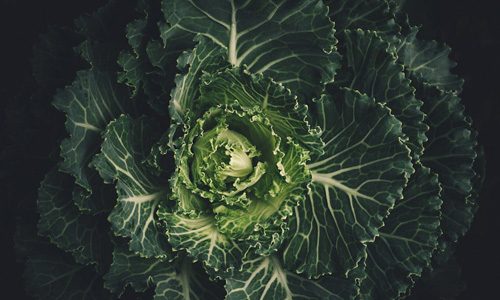
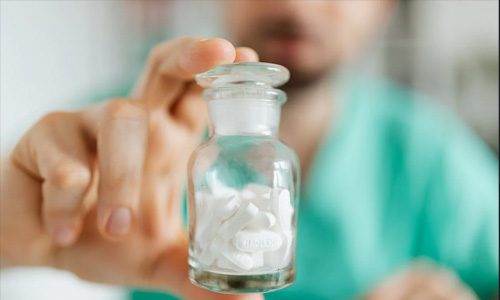 If your mastitis is caused by any bacterial infection, your doctor may prescribe antibiotics. A ten-day course of antibiotics is necessary when you have an infection. It is usually safe for your baby’s health. If the infection gets worse, you can go for IV antibiotics in a hospital.
If your mastitis is caused by any bacterial infection, your doctor may prescribe antibiotics. A ten-day course of antibiotics is necessary when you have an infection. It is usually safe for your baby’s health. If the infection gets worse, you can go for IV antibiotics in a hospital.